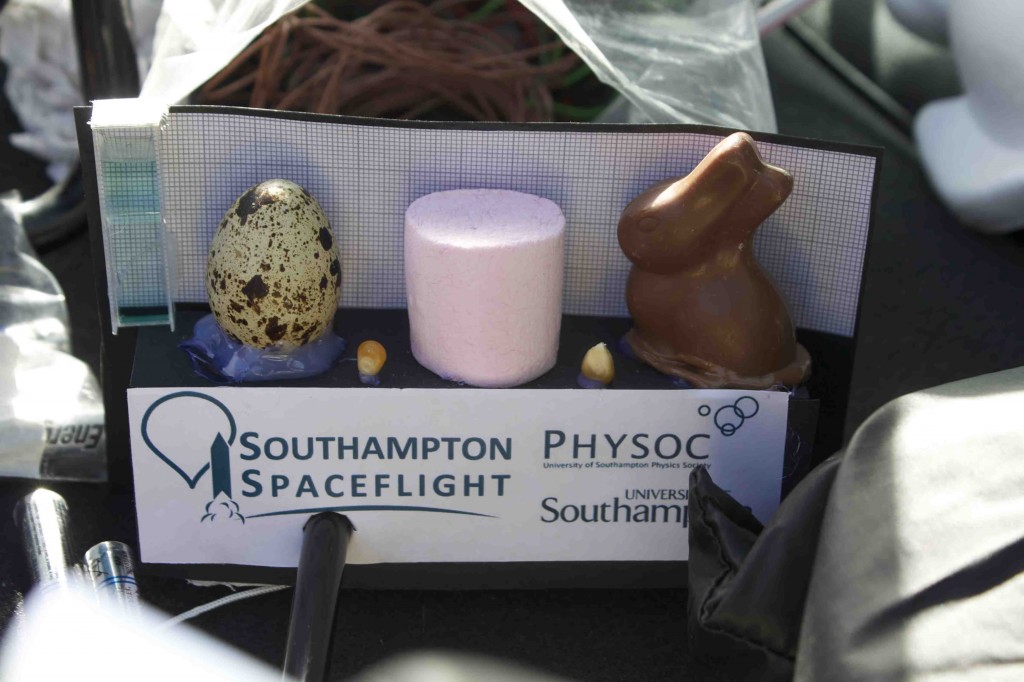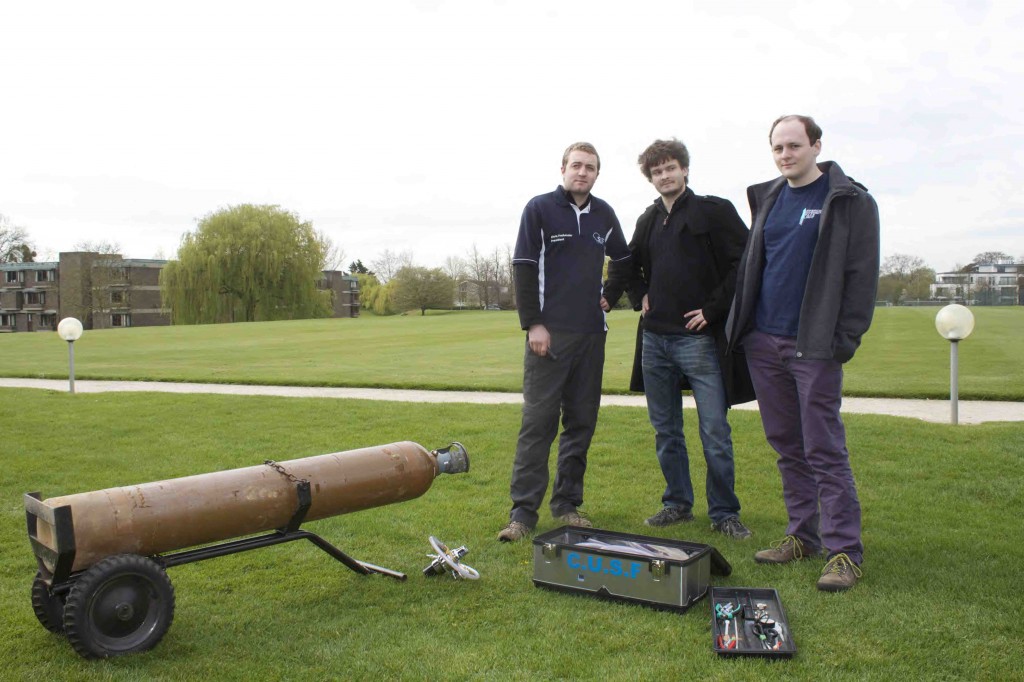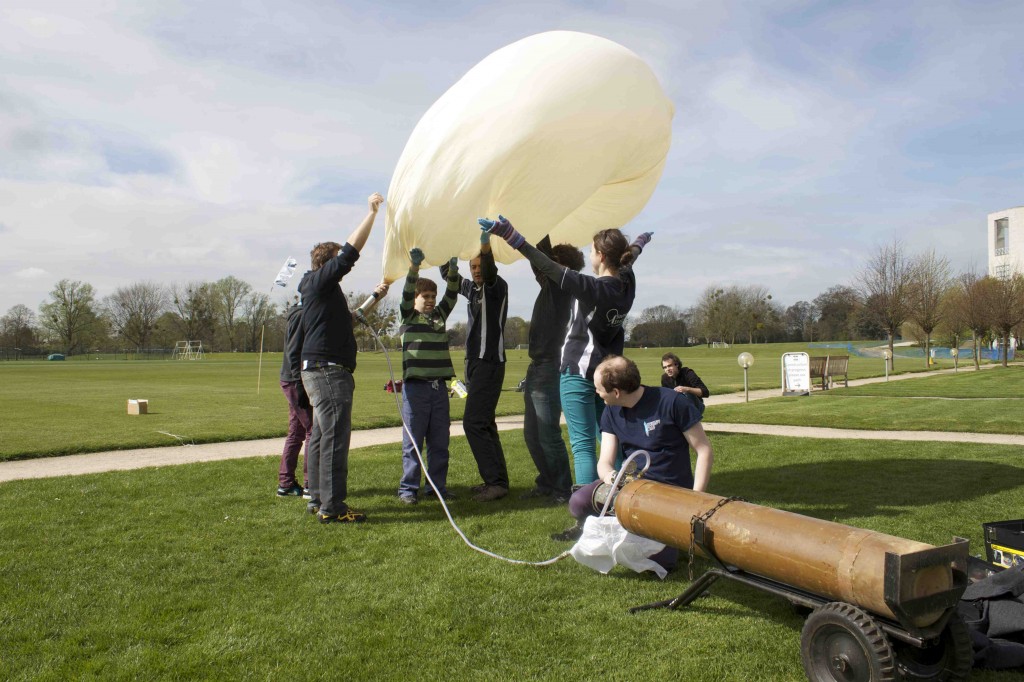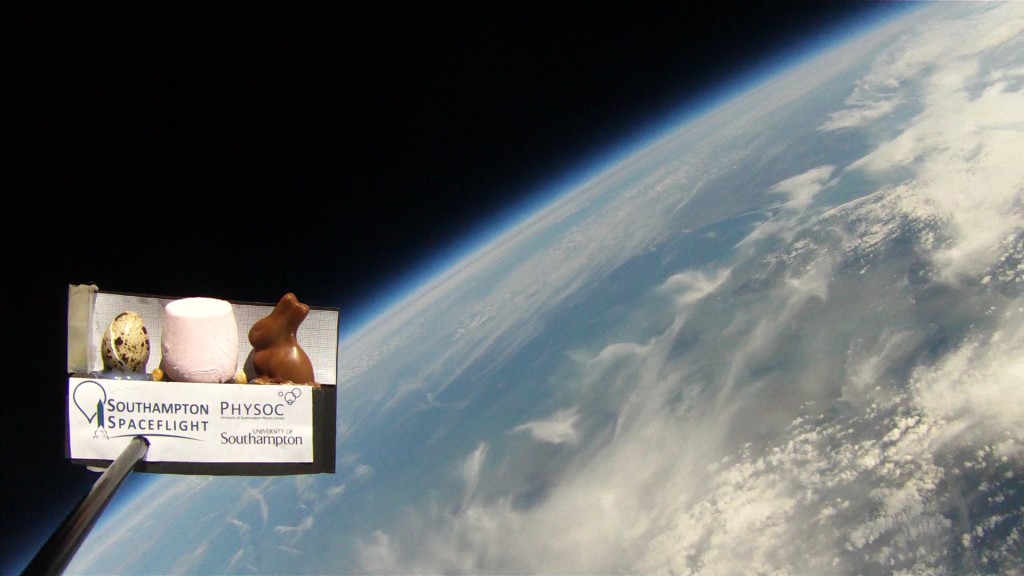Balloonberg and Cedar Upper’s Launch
After a very early morning, the Spaceflight launch team consisting of SUSF President Chris Frohmaier, Vice President Cait Percy, Secretary Polly Osborne, Webmaster George Winstone, Head of Projects Matt Brejza, Engineer Ben Oxley, Olly Morris and Phil Crump arrived at the launch site in Churchill College, Cambridge. The team was to launch two consecutive balloons, one being the Balloonberg launch on behalf of the University of Southampton Physics Society (Physoc) and the other in collaboration with Cedars Upper School Engineering Club.

We arrived at Cambridge at about 8.45am and launched both balloons in quick succession at 12.30pm. Launch conditions were sunny but windy causing both payloads to almost collide with the ground and nearby trees and buildings on launch. Luckily, both were successful and begun their ascent heading northwards.

The Balloonberg project carried a payload consisting of GPS trackers (plus a backup tracker), a temperature sensor, a pressure sensor, a still Canon camera, a Contour ROAM2 video camera, a cosmic ray detector, a radiation sensor and a shelf containing a series of science experiments, namely a popcorn kernel, a marshmallow, a Lindt chocolate rabbit and a small container of water to explore the effects of the high altitude. This shelf was in the field of view of the Contour video camera so the items could be observed the entire length of the trip. The payload also contained a downlink to send back a picture from the stills camera every 2 minutes.

The Cedar Upper School’s project also had a payload consisting of trackers, a temperature sensor, a pressure sensor, a stills Canon camera and a small video camera. They attached a small toy duck to the top of their payload called ‘Duck Aldrin’ which, unfortunately, did not survive the flight.
The Balloonberg balloon had low ascent rate and popped at around 3pm, landing approximately 25 miles away from the original launch site in the small village of Stambourne. Its maximum altitude was 38.5km after a flight time of about 2.5 hours. Unfortunately, the balloon did not shatter when it burst, this may have caused it to become tangled with the string which meant the parachute could not deploy. This caused a very high descent rate and it fell in only a few minutes. The payload landed in someone’s back garden with the balloon remnants and parachute landing on their roof. Luckily, it was easy to retrieve and all of the components survived.
The Cedar Upper School’s balloon had a higher ascent rate and burst at around 2.15pm, landing approximately 35 miles away, just north of Long Melford. It’s maximum altitude was 37.8km. The parachute deployed successfully and the payload landed safely in the middle of a field.

